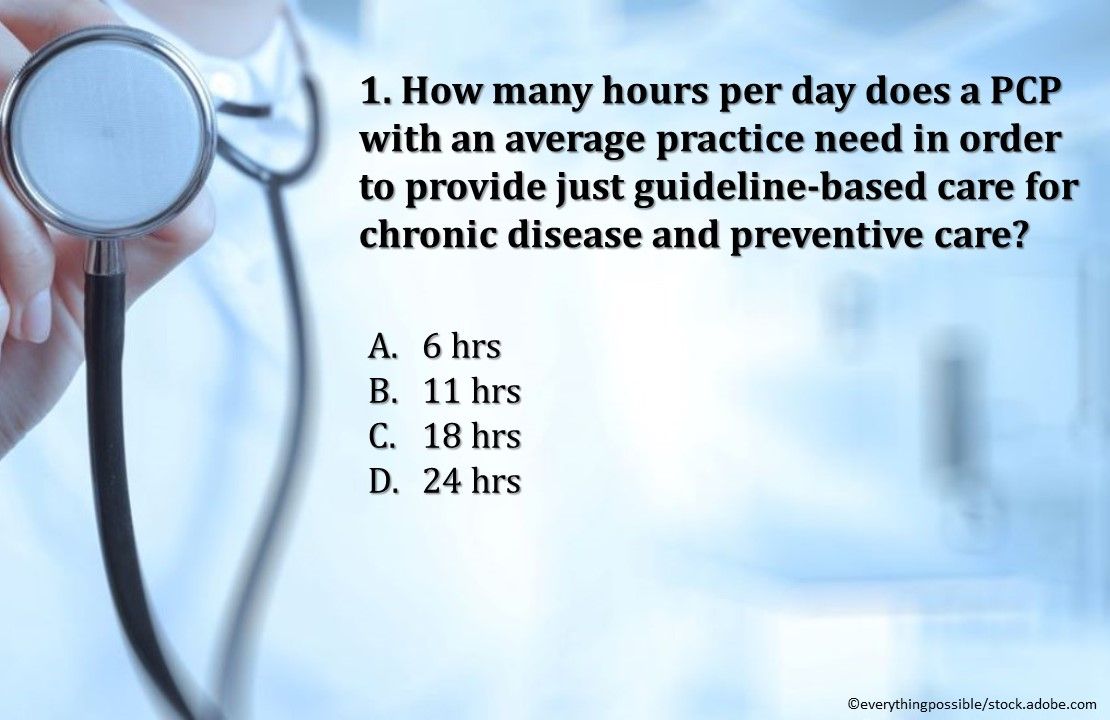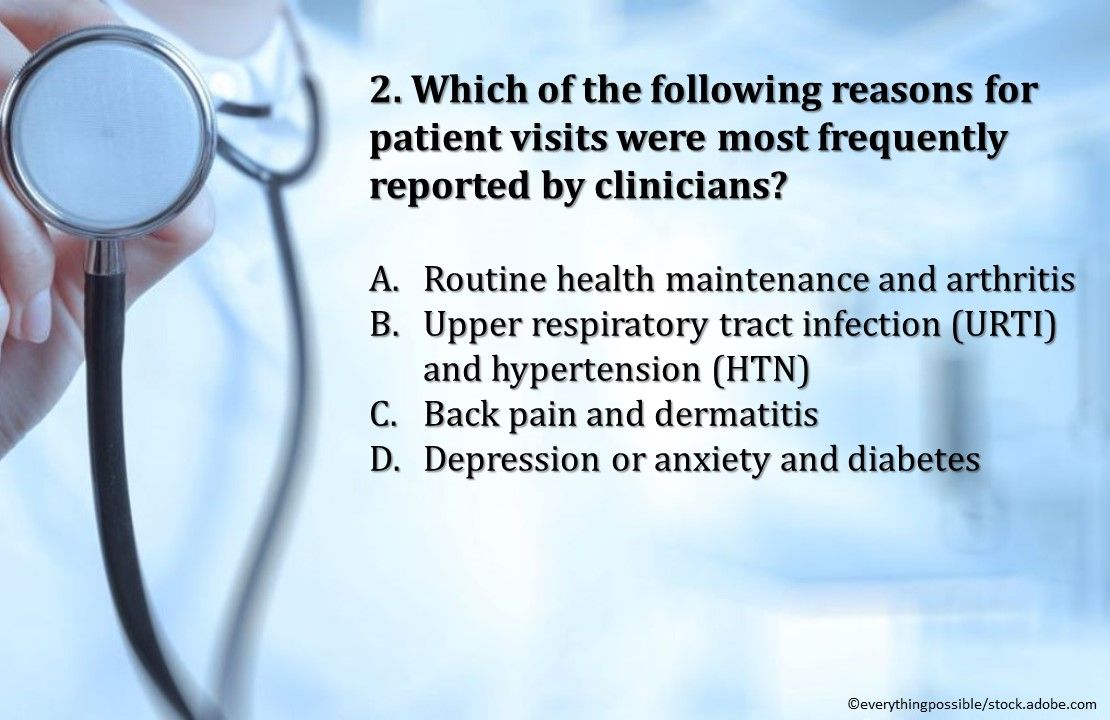© 2025 MJH Life Sciences™ , Patient Care Online – Primary Care News and Clinical Resources. All rights reserved.
Why Patients Come to Primary Care: An 8-question Quiz
Take a minute to test your knowledge of the conditions and symptoms most likely to bring patients to your practice.

Noting that primary care physicians (PCPs) face considerable demands, researchers from the University of Alberta in Edomonton, Canada wanted to provide information that might be useful in practice planning, allocation of resources, clinician training, and the development of practice guidelines. So they conducted a systematic review of large-scale studies from 12 countries on 5 continents to identify the most common reasons for unreferred patient visits (RFV) to primary care practices. Comparisons were made between the RFVs as reported by clinicians and those by patients in developed and developing countries that have differing economic classifications.
Take this brief quiz to test your knowledge of the main reasons why patients come to primary care.

Question 1. How many hours per day does a PCP with an average practice need in order to provide just guideline-based care for chronic disease and preventive care?

Answer: C. 18 hours. The authors noted that a PCP’s workload is heavy and continues to increase, so understanding which conditions present most frequently can help clinicians plan and adapt to meet growing demands.

Question 2. Which of the above reasons for patient visits were most frequently reported by clinicians?

Answer: B. URTI and HTN. URTI and HTN were the most frequent clinician-reported RFVs among patients. URTI ranked first with a mean score of 16.7 out of a possible 20 and HTN came in second at 16.1.

Answer: D. Symptomatic. Symptomatic conditions were the most common patient-reported RFVs. However, no preventive care or management of asymptomatic chronic conditions made the top 10. Patients mostly seek help for symptoms, but there also may be a difference in clinician and patient care priorities.

Answer: A. Cough and back pain. Cough was the most frequent patient-reported RFV with a score of 19 out of 20 and back pain came in second at 16.8. The other most common patient-reported RFVs included abdominal symptoms (16.6), pharyngitis (14.4), and dermatitis (13.4).

Answer: B. Respiratory. Respiratory issues comprised the biggest general category of RFVs. However, all of these categories were included in the top 20 reported RFVs in all 6 of the included studies that researchers analyzed for general categories.

Question 6. Which of the above RFV was ranked in developed countries, but absent from developing countries?

Answer: A. Depression or anxiety. Depression or anxiety was ranked the third most common RFV in developed countries but did not appear in the developing countries list, possibly due to a paucity of data.

Question 7. Which of the above RFV was ranked in developing countries, but absent in developed countries?

Answer: C. Pneumonia. Pneumonia was the third most common RFV in developing countries, but did not appear in the developed countries list. The authors did note that pneumonia and other infectious conditions-including parasites and HIV-are considerably more prevalent in primary care in developing nations.

Question 8. True or false? The authors recommended that because depression or anxiety is a common clinician-reported RFV, clinicians should be trained to manage mental health problems.

Answer: A. True. Study authors suggested that clinicians' training reflect the relative frequency of conditions they will see in practice.
Reference: Finley CR, Chan DS, Garrison S, et al. What are the most common conditions in primary care? Systematic review. Can Fam Physician. 2018;64:832-840.



